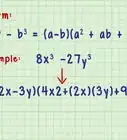wikiHow is a “wiki,” similar to Wikipedia, which means that many of our articles are co-written by multiple authors. To create this article, 42 people, some anonymous, worked to edit and improve it over time.
This article has been viewed 867,341 times.
Learn more...
Polynomial means "many terms," and it can refer to a variety of expressions that can include constants, variables, and exponents. For example, x - 2 is a polynomial; so is 25. To find the degree of a polynomial, all you have to do is find the largest exponent in the polynomial.[1] If you want to find the degree of a polynomial in a variety of situations, just follow these steps.
Steps
Polynomials with One Variable or Fewer
-
1Combine like terms. Combine all of the like terms in the expression so you can simplify it, if they are not combined already. Let's say you're working with the following expression: 3x2 - 3x4 - 5 + 2x + 2x2 - x. Just combine all of the x2, x, and constant terms of the expression to get 5x2 - 3x4 - 5 + x.[2]
-
2Drop all of the constants and coefficients. The constant terms are all of the terms that are not attached to a variable, such as 3 or 5. The coefficients are the terms that are attached to the variable. When you're looking for the degree of a polynomial, you can either just actively ignore these terms or cross them off. For instance, the coefficient of the term 5x2 would be 5. The degree is independent of the coefficients, so you don't need them.
- Working with the equation 5x2 - 3x4 - 5 + x, you would drop the constants and coefficients to get x2 - x4 + x.
Advertisement -
3Put the terms in decreasing order of their exponents. This is also called putting the polynomial in standard form.[3] . The term with the highest exponent should be first, and the term with the lowest exponent should be last. This will help you see which term has the exponent with the largest value. In the previous example, you would be left with
-x4 + x2 + x. -
4Find the power of the largest term. The power is simply number in the exponent. In the example, -x4 + x2 + x, the power of the first term is 4. Since you've arranged the polynomial to put the largest exponent first, that will be where you will find the largest term.
-
5Identify this number as the degree of the polynomial. You can just write that the degree of the polynomial = 4, or you can write the answer in a more appropriate form: deg (3x2 - 3x4 - 5 + 2x + 2x2 - x) = 4. You're all done.[4]
-
6Know that the degree of a constant is zero. If your polynomial is only a constant, such as 15 or 55, then the degree of that polynomial is really zero. You can think of the constant term as being attached to a variable to the degree of 0, which is really 1. For example, if you have the constant 15, you can think of it as 15x0, which is really 15 x 1, or 15. This proves that the degree of a constant is 0.
Polynomials with Multiple Variables
-
1Write the expression. Finding the degree of a polynomial with multiple variables is only a little bit trickier than finding the degree of a polynomial with one variable. Let's say you're working with the following expression:
- x5y3z + 2xy3 + 4x2yz2
-
2Add the degree of variables in each term. Just add up the degrees of the variables in each of the terms; it does not matter that they are different variables. Remember that the degree of a variable without a written degree, such as x or y, is just one. Here's how you do it for all three terms:[5]
- deg(x5y3z) = 5 + 3 + 1 = 9
- deg(2xy3) = 1 + 3 = 4
- deg(4x2yz2) = 2 + 1 + 2 = 5
-
3Identify the largest degree of these terms. The largest degree of these three terms is 9, the value of the added degree values of the first term.[6]
-
4Identify this number as the degree of the polynomial. 9 is the degree of the entire polynomial. You can write the final answer like this: deg (x5y3z + 2xy3 + 4x2yz2) = 9.
Rational Expressions
-
1Write down the expression. Let's say you're working with the following expression: (x2 + 1)/(6x -2).[7]
-
2Eliminate all coefficients and constants. You won't need the coefficients or constant terms to find the degree of a polynomial with fractions. So, eliminate the 1 from the numerator and the 6 and -2 from the denominator. You're left with x2/x.
-
3Subtract the degree of the variable in the denominator from the degree of the variable in the numerator. The degree of the variable in the numerator is 2 and the degree of the variable in the denominator is 1. So, subtract 1 from 2. 2-1 = 1.
-
4Write the result as your answer. The degree of this rational expression is 1. You can write it like this: deg [(x2 + 1)/(6x -2)] = 1.
Community Q&A
-
QuestionWhat is the degree of a polynomial?
 Community AnswerIn the case of a polynomial with only one variable (such as 2x³ + 5x² - 4x +3, where x is the only variable),the degree is the same as the highest exponent appearing in the polynomial (in this case 3). In the case of a polynomial with more than one variable, the degree is found by looking at each monomial within the polynomial, adding together all the exponents within a monomial, and choosing the largest sum of exponents. That sum is the degree of the polynomial. For example, in the expression 2x²y³ + 4xy² - 3xy, the first monomial has an exponent total of 5 (2+3), which is the largest exponent total in the polynomial, so that's the degree of the polynomial.
Community AnswerIn the case of a polynomial with only one variable (such as 2x³ + 5x² - 4x +3, where x is the only variable),the degree is the same as the highest exponent appearing in the polynomial (in this case 3). In the case of a polynomial with more than one variable, the degree is found by looking at each monomial within the polynomial, adding together all the exponents within a monomial, and choosing the largest sum of exponents. That sum is the degree of the polynomial. For example, in the expression 2x²y³ + 4xy² - 3xy, the first monomial has an exponent total of 5 (2+3), which is the largest exponent total in the polynomial, so that's the degree of the polynomial. -
QuestionWhat is degree of 1/x^4 + x^2?
 DonaganTop Answerer1 / (x^4) is equivalent to x^(-4). So the highest (most positive) exponent in the polynomial is 2, meaning that 2 is the degree of the polynomial.
DonaganTop Answerer1 / (x^4) is equivalent to x^(-4). So the highest (most positive) exponent in the polynomial is 2, meaning that 2 is the degree of the polynomial. -
QuestionWhat about a polynomial with multiple variables that has one or more negative exponents in it?
 DonaganTop AnswererCombine the exponents found within a given monomial as you would if all the exponents were positive, but you would subtract the negative exponents.
DonaganTop AnswererCombine the exponents found within a given monomial as you would if all the exponents were positive, but you would subtract the negative exponents.
References
- ↑ http://www.mathwarehouse.com/algebra/polynomial/degree-of-polynomial.php
- ↑ https://www.purplemath.com/modules/polydefs.htm
- ↑ http://www.mathsisfun.com/algebra/polynomials.html
- ↑ http://www.mathwarehouse.com/algebra/polynomial/degree-of-polynomial.php
- ↑ http://www.mathsisfun.com/algebra/degree-expression.html
- ↑ http://www.columbia.edu/itc/sipa/math/variables.html
- ↑ http://www.mathsisfun.com/algebra/degree-expression.html
About This Article
To find the degree of a polynomial with one variable, combine the like terms in the expression so you can simplify it. Next, drop all of the constants and coefficients from the expression. Then, put the terms in decreasing order of their exponents and find the power of the largest term. The power of the largest term is the degree of the polynomial. To find the degree of a polynomial with multiple variables, write out the expression, then add the degree of variables in each term. The power of the largest term is your answer! If you want to learn how to find the degree of a polynomial in a rational expression, keep reading the article!
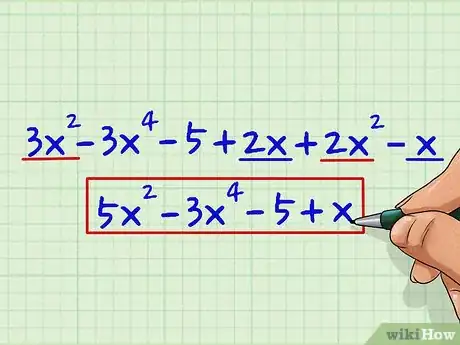
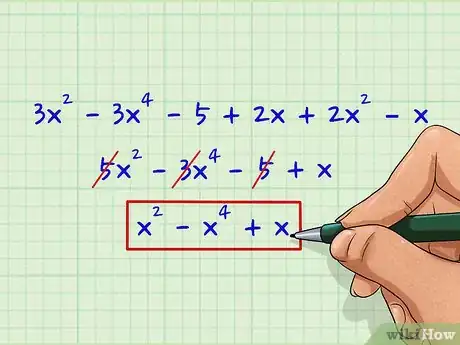
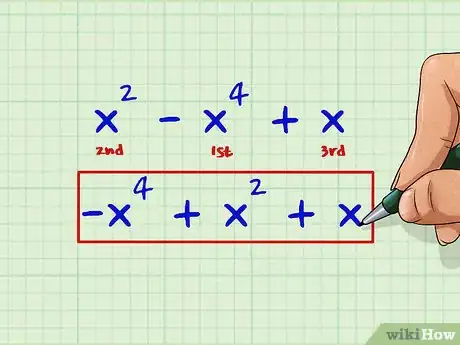
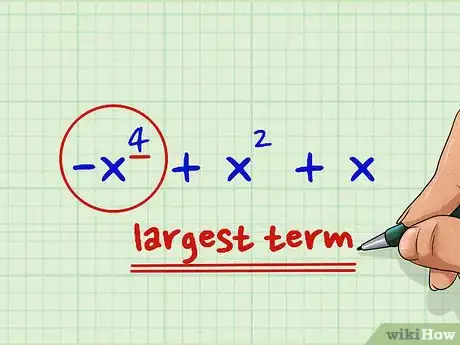
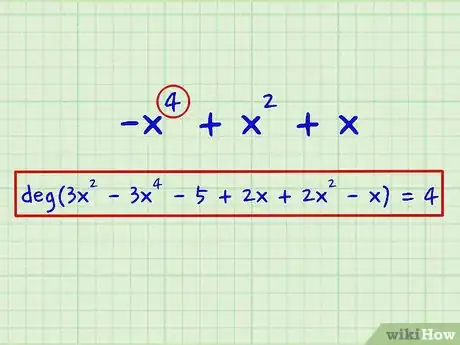
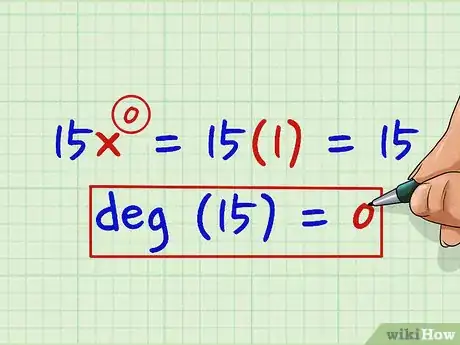
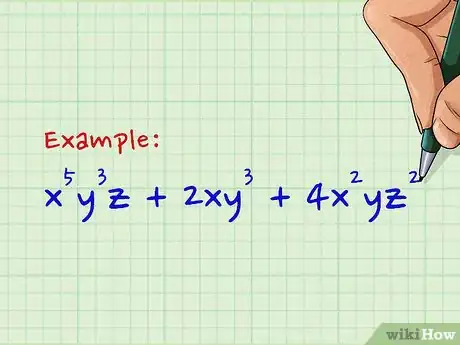
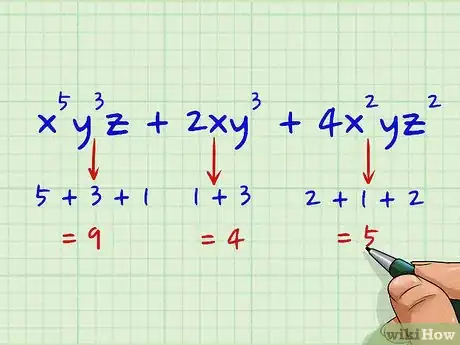
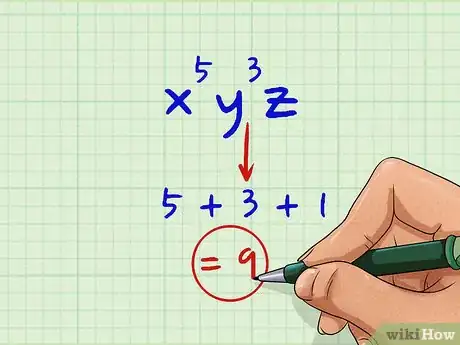
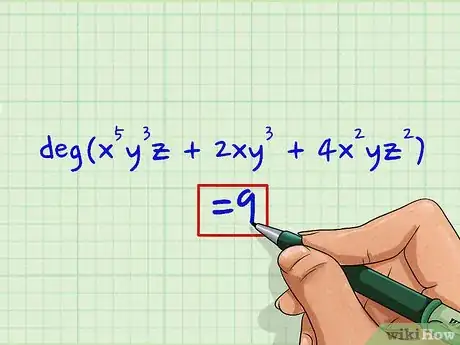
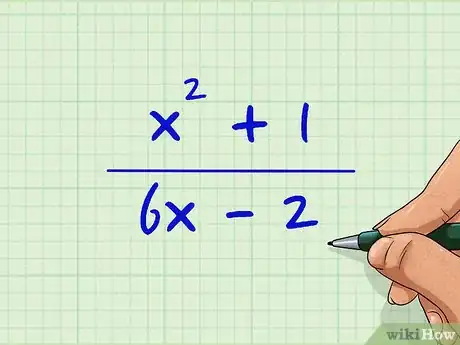
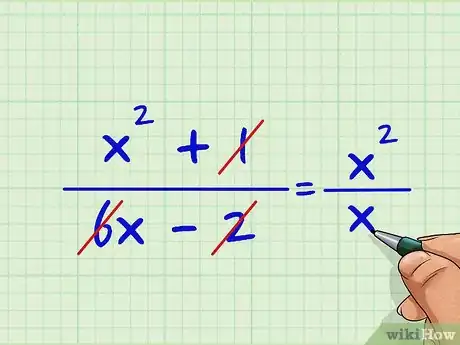

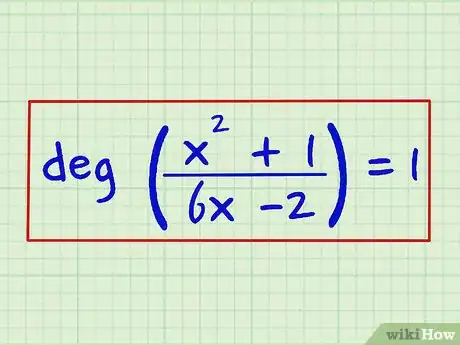
-Step-31-Version-2.webp)
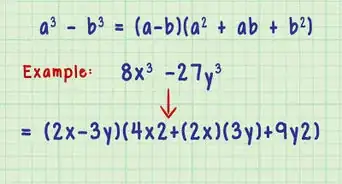

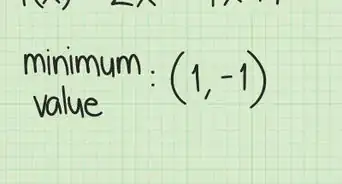
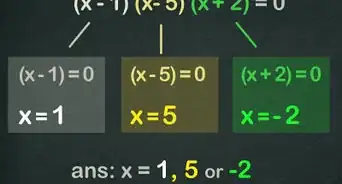
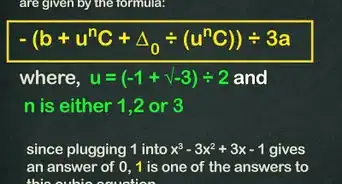

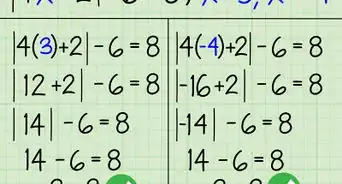
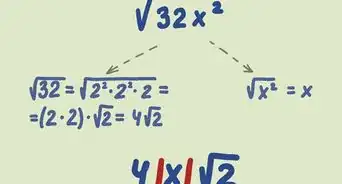
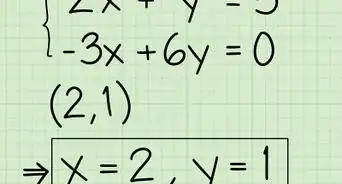


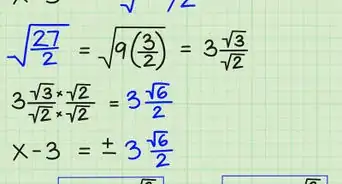
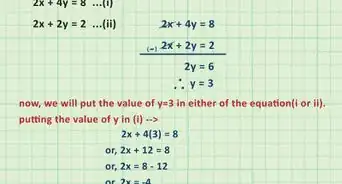






-Step-31-Version-2.webp)
